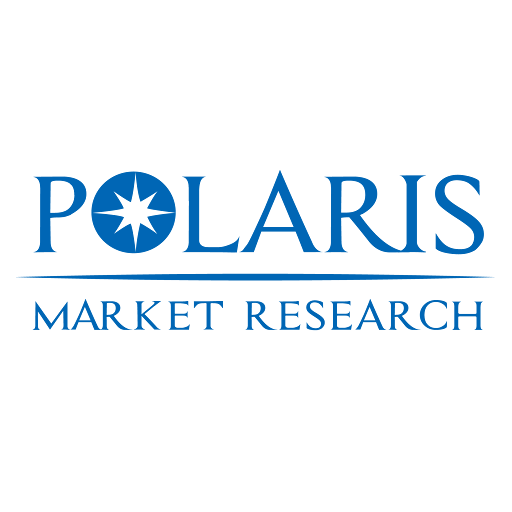The global veterinary clinical chemistry diagnostics market is entering a decisive growth phase, underpinned by rising demand for animal health testing and expanding infrastructure for veterinary care. The global veterinary clinical chemistry diagnostics market size was valued at USD 2.24 billion in 2024, growing at a CAGR of 8.5% from 2025 to 2034, according to recent industry forecasts. This momentum is being fueled by increased pet ownership, heightened disease awareness, and investments in in-clinic diagnostics, as well as scaling lab capacity in emerging regions. Across geographies, local regulatory frameworks, cross-border supply chains, and regional manufacturing trends are shaping how market participants balance cost, access, and technological deployment.
In North America, the veterinary clinical chemistry diagnostics market remains the most mature and heavily monetized region thanks to its high density of veterinary clinics, strong pet insurance penetration, and advanced reference laboratory networks. According to Polaris Market Research, North America holds a dominant share in the global market, supported by widespread adoption of automated analyzers and point-of-care systems that streamline workflows and improve turnaround times for clinical chemistry tests. Regulators in the U.S. also influence market dynamics: increasing scrutiny on veterinary reimbursement, quality standards, and diagnostic accuracy incentivizes providers and laboratory chains to adopt robust clinical chemistry platforms and integrate value-based testing strategies. Moreover, well-established cross-border supply chains enable reagent and consumable providers to efficiently service both urban and rural markets, reinforcing market penetration strategies through economies of scale.
Europe is also a key region for veterinary clinical chemistry diagnostics, with a strong presence in countries such as Germany, the United Kingdom, France, and the Netherlands. The European market benefits from rigorous animal welfare regulations, well-funded public and private veterinary infrastructure, and distributed laboratory networks. European producers and diagnostics companies leverage regional manufacturing capabilities, particularly in reagent and kit production, to serve both domestic and neighboring markets. Trade policies within the European Union ease cross-border movement of diagnostic consumables, while regional regulatory harmonization ensures quality and safety. However, the fragmented nature of payers—ranging from private veterinary practices to state-funded agricultural programs—requires nuanced market penetration strategies, with companies tailoring offerings to localized needs for herd health monitoring, metabolic disease screening, and wellness testing.
In the Asia-Pacific region, the veterinary clinical chemistry diagnostics market is emerging rapidly, led by growing livestock farming, rising companion animal care, and expanding veterinary infrastructure in China, India, Japan, and Southeast Asia. According to NovaOne Advisor’s regional projections, Asia-Pacific is expected to register one of the fastest growth rates over the forecast period. The region’s transition toward value chain optimization is clear: diagnostics companies are investing in local reagent manufacturing, point-of-care equipment suited for remote clinics, and distributed lab networks to serve both large farms and urban pet communities. Government initiatives around food safety, animal disease surveillance, and veterinary public health further support regulatory tailwinds. Cross-border supply chains, however, remain sensitive to trade policies and import duties, particularly for advanced analyzers, which creates both challenges and opportunities for market entrants seeking regional manufacturing strategies.
Across these regions, key drivers for the global veterinary clinical chemistry diagnostics market include the rising incidence of chronic and infectious diseases in both companion animals and production livestock. Grand View Research reports that the increasing prevalence of conditions such as renal dysfunction, liver disorders, metabolic abnormalities, and infectious pathogens is driving demand for routine biochemical screening. In addition, the humanization of pets—particularly in mature markets—means pet owners are more willing to pay for early detection and wellness panels, fueling higher utilization of clinical chemistry tests.
Read More @ https://www.polarismarketresearch.com/industry-analysis/veterinary-clinical-chemistry-diagnostics-market
At the same time, digital transformation is amplifying efficiency in veterinary diagnostics. Laboratories and clinics are increasingly implementing automated chemistry analyzers, cloud-based data systems, and remote result reporting, reducing manual intervention and accelerating decision-making. This trend enhances operational scalability and supports regional manufacturing trends, as reagents and consumables can be standardized across networks, lowering costs and improving quality consistency.
However, some constraints are moderating growth. The high upfront cost of advanced analyzers remains a key barrier, particularly for smaller veterinary practices or labs in regions with limited capital. Polaris Market Research highlights that the expense of clinical chemistry equipment and maintenance has slowed adoption in cost-sensitive markets. Furthermore, variation in regulatory frameworks across countries adds complexity; import duties, certification requirements, and local registration timelines can delay deployment of core instrumentation and supplies. These regulatory and financial hurdles can complicate cross-border supply chains and deter some companies from aggressive regional expansion.
Looking ahead, several compelling opportunities are emerging. The integration of artificial intelligence and machine learning into veterinary diagnostics is paving the way for predictive analytics, trend forecasting, and more precise biomarker interpretation. Such innovation enables better disease management, wellness screening, and therapy monitoring. Regions with strong digital infrastructure—like North America and Europe—are leading in adoption, but emerging markets in Asia-Pacific are catching up as companies invest in smart point-of-care devices optimized for lower-resource settings.
Another significant opportunity lies in value-based care models and herd health management in livestock. Clinical chemistry diagnostics can support routine metabolic profiling, health monitoring, and productivity optimization in large-scale farming operations. Companies that can tailor cost-effective reagent kits, low-maintenance analyzers, and training programs for rural labs stand to capture substantial upside. The trend toward regional manufacturing of reagents and consumables not only reduces cost but also strengthens resilience amid global supply chain disruptions.
Additionally, trade-led strategies present a critical lever: cross-border partnerships and joint ventures among diagnostics firms can accelerate market entry into underpenetrated geographies. By aligning production with regional demand and leveraging harmonized regulatory pathways, companies can refine their market penetration strategies and scale more sustainably.
In terms of competitive landscape, the global veterinary clinical chemistry diagnostics market remains fairly consolidated, with a handful of established players dominating by virtue of deep R&D capacity, extensive distribution networks, and strong brand equity. The leading companies are:
• IDEXX Laboratories, Inc.
• Zoetis
• Thermo Fisher Scientific, Inc.
More Trending Latest Reports By Polaris Market Research:
Latex Agglutination Test Kits Market
Digital Banking Platform Market

Join our community to interact with posts!